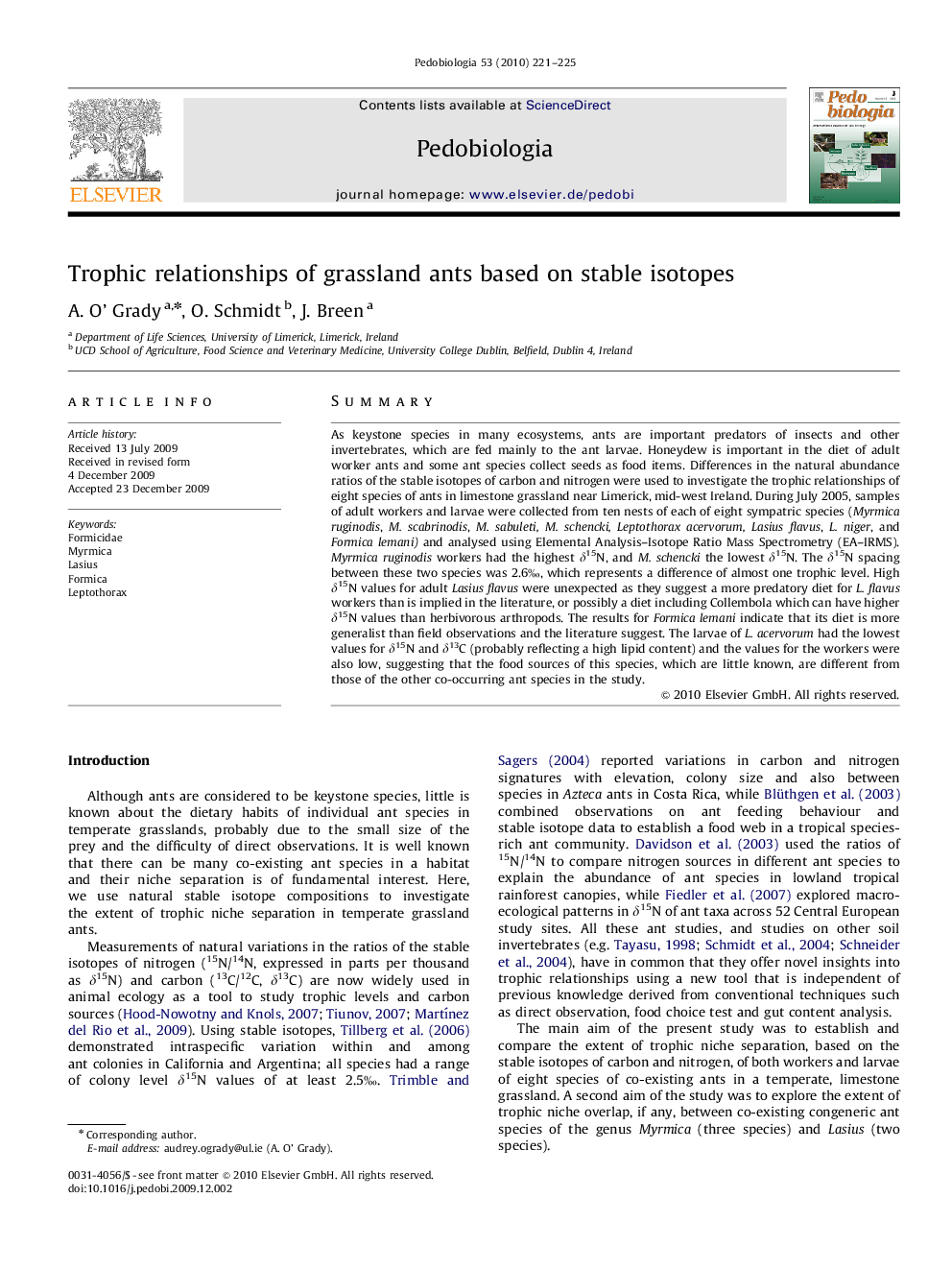| کد مقاله | کد نشریه | سال انتشار | مقاله انگلیسی | نسخه تمام متن |
|---|---|---|---|---|
| 2061507 | 1076496 | 2010 | 5 صفحه PDF | دانلود رایگان |

SummaryAs keystone species in many ecosystems, ants are important predators of insects and other invertebrates, which are fed mainly to the ant larvae. Honeydew is important in the diet of adult worker ants and some ant species collect seeds as food items. Differences in the natural abundance ratios of the stable isotopes of carbon and nitrogen were used to investigate the trophic relationships of eight species of ants in limestone grassland near Limerick, mid-west Ireland. During July 2005, samples of adult workers and larvae were collected from ten nests of each of eight sympatric species (Myrmica ruginodis, M. scabrinodis, M. sabuleti, M. schencki, Leptothorax acervorum, Lasius flavus, L. niger, and Formica lemani) and analysed using Elemental Analysis–Isotope Ratio Mass Spectrometry (EA–IRMS). Myrmica ruginodis workers had the highest δ15N, and M. schencki the lowest δ15N. The δ15N spacing between these two species was 2.6‰, which represents a difference of almost one trophic level. High δ15N values for adult Lasius flavus were unexpected as they suggest a more predatory diet for L. flavus workers than is implied in the literature, or possibly a diet including Collembola which can have higher δ15N values than herbivorous arthropods. The results for Formica lemani indicate that its diet is more generalist than field observations and the literature suggest. The larvae of L. acervorum had the lowest values for δ15N and δ13C (probably reflecting a high lipid content) and the values for the workers were also low, suggesting that the food sources of this species, which are little known, are different from those of the other co-occurring ant species in the study.
Journal: Pedobiologia - Volume 53, Issue 4, 10 July 2010, Pages 221–225